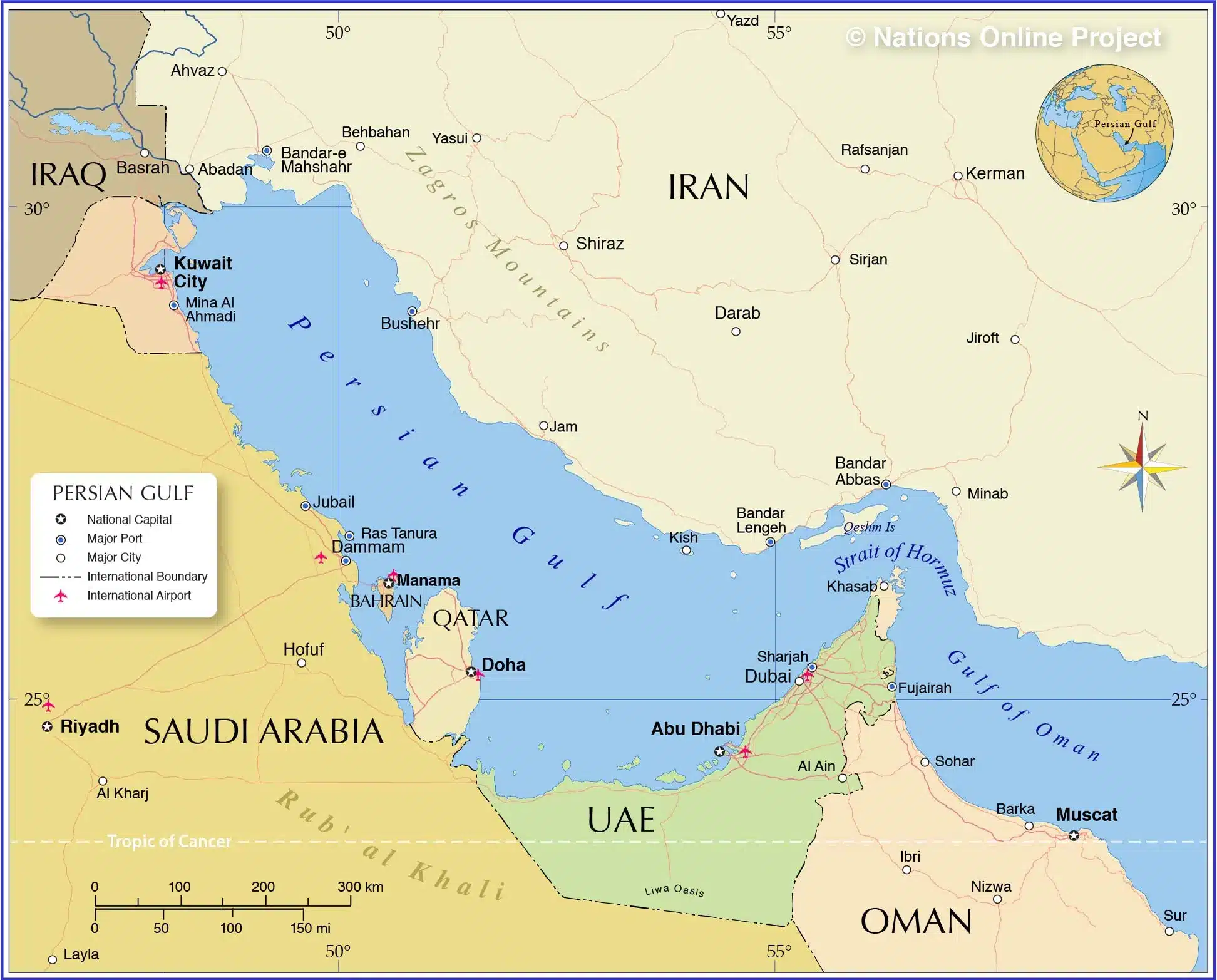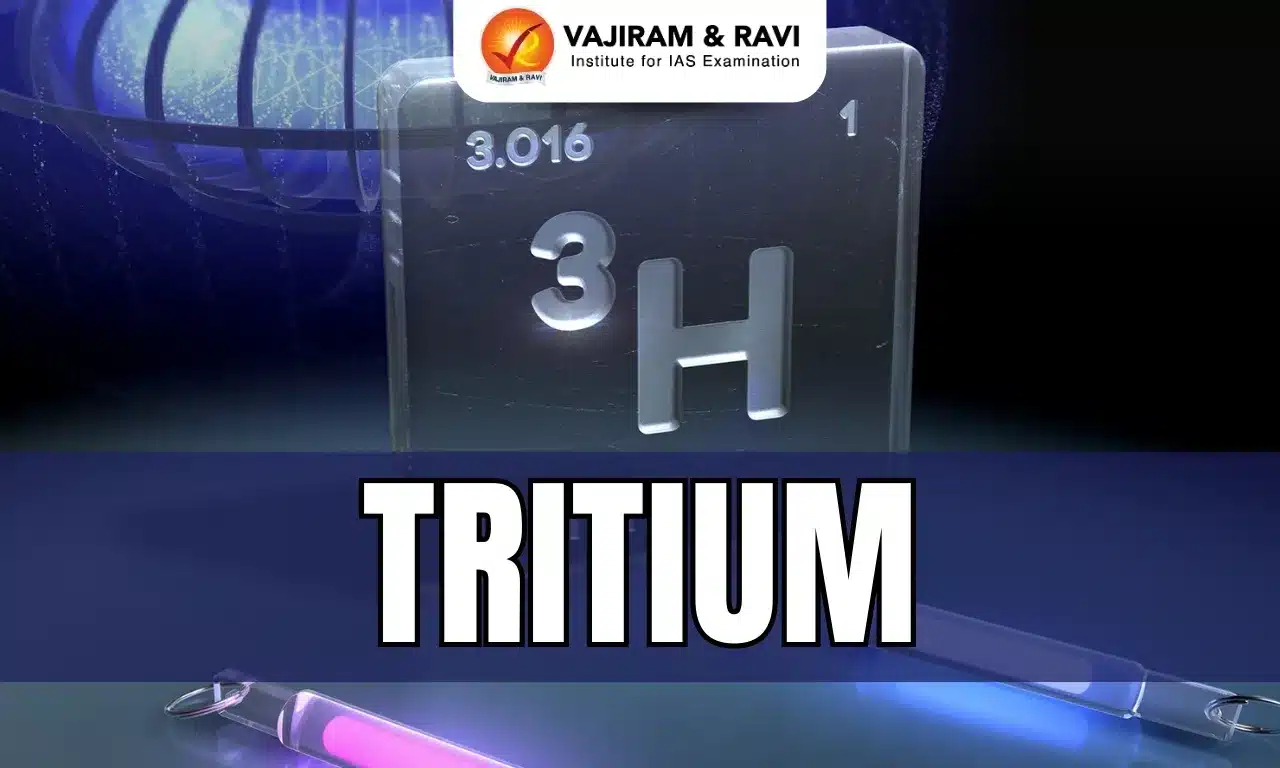About Persian Gulf
- It is part of the Indian Ocean.
- It is located in Western Asia.
- It is an extension of the Gulf of Oman and connects to the Indian Ocean via the Strait of Hormuz in the east.
- It is also referred to as the Arabian Gulf or Gulf of Iran.
- It lies between the Arabian Peninsula and Iran to the southwest and northeast, respectively.
- It covers approximately 251,000 km2, with a maximum depth of 90 meters and an average depth of 50 meters.
- It is bounded by several countries, including Iran to the north, Qatar, Saudi Arabia, and the United Arab Emirates on the peninsula, and Bahrain, Iraq, and Kuwait in the northwest.
- Its western end is marked by the major river delta of the Shatt al-Arab, which carries the waters of the Euphrates and Tigris rivers.
- It has a coastline length of about 5,117 km, with Iran having the longest coastline (1,536 km).
- Islands:
- There are several islands in the Persian Gulf, including Bahrain, the Persian Gulf state. Bahrain comprises over 50 islands centered on the Bahrain Island.
- Qeshm Island is the largest island in the Persian Gulf, covering approximately 1,491 km2 (almost 2.5 times the size of Bahrain).
Q1) What is a Gulf?
The Gulf is a portion of the sea that is almost surrounded by land except one narrow opening. Gulfs are formed when a giant rock collapses or when a piece of land sinks. This causes a big indentation in the area, and the water eventually fills it up. Gulfs are also formed through a natural process of erosion.
Source: China Adds Persian Gulf Oil Bookings as Red Sea Crisis Persists
Last updated on July, 2025
→ UPSC Notification 2025 was released on 22nd January 2025.
→ UPSC Prelims Result 2025 is out now for the CSE held on 25 May 2025.
→ UPSC Prelims Question Paper 2025 and Unofficial Prelims Answer Key 2025 are available now.
→ UPSC Calendar 2026 is released on 15th May, 2025.
→ The UPSC Vacancy 2025 were released 1129, out of which 979 were for UPSC CSE and remaining 150 are for UPSC IFoS.
→ UPSC Mains 2025 will be conducted on 22nd August 2025.
→ UPSC Prelims 2026 will be conducted on 24th May, 2026 & UPSC Mains 2026 will be conducted on 21st August 2026.
→ The UPSC Selection Process is of 3 stages-Prelims, Mains and Interview.
→ UPSC Result 2024 is released with latest UPSC Marksheet 2024. Check Now!
→ UPSC Toppers List 2024 is released now. Shakti Dubey is UPSC AIR 1 2024 Topper.
→ Also check Best IAS Coaching in Delhi















